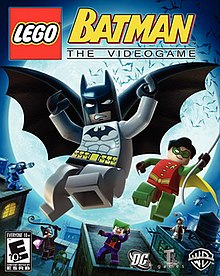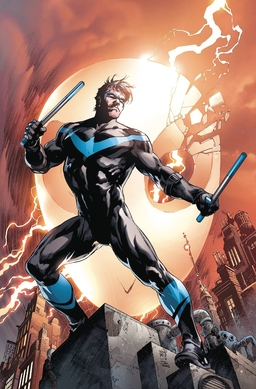
Nightwing is the name of several superheroes appearing in American comic books published by DC Comics. The most prominent is Dick Grayson, who takes the name when he leaves his role as Batman's partner and sidekick Robin in his adulthood.

Killer Moth is a supervillain appearing in comic books published by DC Comics, usually as an adversary and dedicated original foil personality of Batman. Like Batman, he has no superpowers and relies on his technical equipment, including a Mothmobile and numerous gimmicks. Killer Moth originally wore a garish costume of purple and green striped fabric, with an orange cape and moth-like mask. In Underworld Unleashed, Killer Moth is transformed into the monster Charaxes with superhuman abilities.

Firefly is a supervillain appearing in American comic books published by DC Comics. Created by France Herron and Dick Sprang, he made his debut in Detective Comics #184. Initially portrayed as a criminal who utilized lighting effects to commit robberies, Firefly was later reimagined as a sociopathic pyromaniac with an obsessive compulsion to start fires following Crisis on Infinite Earths' reboot of the DC Universe in the 1980s. This darker depiction of the character has since endured as one of the superhero Batman's most recurring enemies and belongs to the collective of adversaries that make up his central rogues gallery.
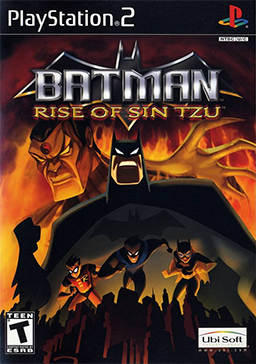
Batman: Rise of Sin Tzu is a 2003 action beat 'em up video game released for the Xbox, PlayStation 2, Game Boy Advance and GameCube consoles. It was developed and published by Ubi Soft in conjunction with Warner Bros. Interactive Entertainment and DC Comics. The game is based on the television series The New Batman Adventures and features most of the voice actors reprising their roles. The story follows the Batfamily as they face a new adversary, a superpowered Asian warlord known as Sin Tzu, on the anniversary of Batman's parents' murder.
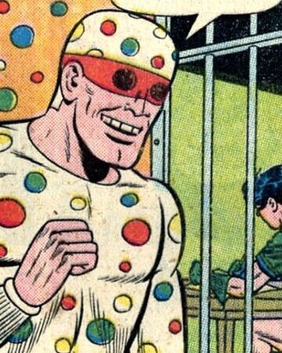
The Polka-Dot Man is a supervillain appearing in comic books published by DC Comics. He is primarily a minor enemy of Batman, and belongs to the collective of adversaries that make up his rogues gallery.

Justice League Heroes is a 2006 console video game for the PlayStation 2 and Xbox platforms. It was developed by Snowblind Studios, published by Warner Bros. Interactive Entertainment in conjunction with DC Comics and was distributed in Europe by Eidos Interactive. Based on the long-running comic book series Justice League, it was written by comic book writer Dwayne McDuffie. It uses the Snowblind Studios game engine.

The Batcycle, Batblade, or Batpod is the fictional personal motorcycle of the DC Comics superhero Batman. In the comic book universe, Batman's personal Batcycle is a modified street-bike with a 786 cc liquid-cooled V-4 engine. It contains a computer-controlled carburetor and bulletproof wind-guard.

In addition to DC Comics books, the superhero Robin also appears in other media, such as films, television and radio. Dick Grayson, Jason Todd, Tim Drake, Stephanie Brown, and Damian Wayne are examples of the characters who use the name Robin.
Originally created in 1967, the fictional comic book character Barbara Gordon has been adapted into various other forms of media. The character has appeared in both live action and animated television series and films, as well as in video games in her alter-egos as both Batgirl and Oracle!.

Lego Battles is a LEGO video game developed by Hellbent Games and co-published by Warner Bros. Interactive Entertainment and TT Games Publishing. It was released on June 9, 2009, for the Nintendo DS. There are a total of three different stories in the game with six different quests and 15 different levels in each quest, with the option of playing as the protagonists or the antagonists of each story. Quests are divided into three acts, each ranging in length of 4-6 levels. The game is based on the buildable toy lines of Lego themes such as Castle, Pirates, and Space themes.
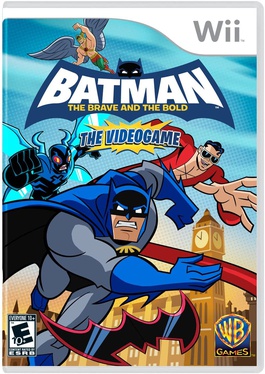
Batman: The Brave and the Bold – The Videogame is a video game based on the comic book character Batman and the television cartoon series Batman: The Brave and the Bold. It was developed by WayForward Technologies and distributed by Warner Bros. Interactive Entertainment. It was released on September 7, 2010, for the Wii and Nintendo DS, and is the only non-Lego Batman video game released for those platforms.

Lego Batman 2: DC Super Heroes is a 2012 Lego-themed action-adventure game developed by Traveller's Tales and published by Warner Bros. Interactive Entertainment. The game is a sequel to Lego Batman: The Videogame and the second installment in the Lego Batman series. The main storyline follows Batman, Robin and later Superman as they attempt to foil the Joker and Lex Luthor's plans to have the latter become president of the United States, joining forces with the Justice League along the way. As a result, the game's cast is larger than its predecessor and includes characters outside of the Batman series.

Young Justice: Legacy is an action-adventure video game developed by Freedom Factory Studios and published by Little Orbit. It was released in November 2013 for Nintendo 3DS, Microsoft Windows, PlayStation 3, and Xbox 360. The game is based on the Young Justice animated television series, and takes place in the five-year gap between seasons one and two, and was developed in collaboration with the writers of the series, Greg Weisman and Brandon Vietti. Originally the game was planned to also be released on Nintendo DS, Wii, and Wii U, but the developers announced that these versions were cancelled due to quality issues and low interest from retailers.
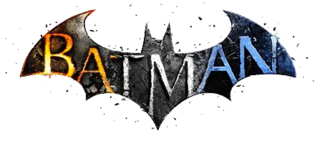
Batman: Arkham is a superhero action-adventure video game series based on the DC Comics character Batman, developed by Rocksteady Studios and WB Games Montréal, and published originally by Eidos Interactive and currently by Warner Bros. Games. The franchise consists of four main installments and a spin-off, along with four smaller titles for mobile devices, a virtual reality game, tie-in comic books, and an animated film. The continuity established by the games is often referred to as the Arkhamverse.

Lego Batman 3: Beyond Gotham is a Lego-themed action-adventure platform video game developed by Traveller's Tales and published by Warner Bros. Interactive Entertainment that was released in 2014. It is the third installment in the Lego Batman video game series and a sequel to Lego Batman: The Videogame and Lego Batman 2: DC Super Heroes. Similarly to its predecessor, the game features voice acting and semi-open world environments, and focuses on a large cast of characters from the entire DC Universe rather than just Batman and Robin. In the game's story, Brainiac attacks the Earth, intending to shrink the planet and add it to his collection, which forces the Justice League and the Legion of Doom to form an unlikely alliance to stop him.
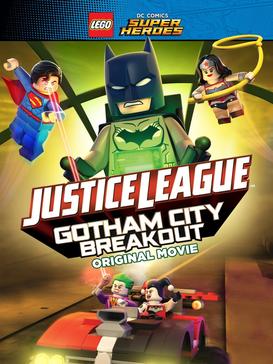
Lego DC Comics Super Heroes: Justice League – Gotham City Breakout is a 2016 American animated superhero comedy film based on the Lego and DC Comics brands, which was released on June 21, 2016 in Digital HD and on July 12, 2016 on Blu-ray and DVD. It is the sixth Lego DC Comics film following Lego Batman: The Movie – DC Super Heroes Unite, Lego DC Comics: Batman Be-Leaguered, Lego DC Comics Super Heroes: Justice League vs. Bizarro League, Lego DC Comics Super Heroes: Justice League – Attack of the Legion of Doom and Lego DC Comics Super Heroes: Justice League – Cosmic Clash. Some actors from various DC properties reprise their respective roles, including Nolan North as Superman, Grey DeLisle as Wonder Woman and Troy Baker as Batman. The film received positive reviews, with praise for the action, although the consumerism was criticized.
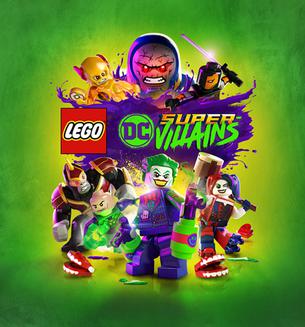
Lego DC Super-Villains is a Lego-themed action-adventure platform video game developed by Traveller's Tales. The fourth installment in the Lego Batman series of games, it is a spin-off that focuses entirely on villains of the DC Universe; it is the first in the series to do so since the villain levels from Lego Batman: The Videogame. The game was released by Warner Bros. Interactive Entertainment on 16 October 2018 in North America and 19 October worldwide. The macOS version of the game was released by Feral Interactive on 30 July 2019.

The Scarecrow, a supervillain in DC Comics and an adversary of the superhero Batman, has been adapted in various forms of media, including films, television series, and video games. The character has been portrayed in film by Cillian Murphy in The Dark Knight Trilogy, and in television by Charlie Tahan and David W. Thompson in the Fox series Gotham, and Vincent Kartheiser in the HBO Max streaming series Titans. Henry Polic II, Jeffrey Combs, Dino Andrade, John Noble, Robert Englund, and others have provided the Scarecrow's voice in animation and video games.

Gotham Knights is a 2022 action role-playing game developed by WB Games Montréal and published by Warner Bros. Games. Inspired by the Batman: Gotham Knights comic series and based on the DC Comics character Batman and his supporting cast, the game focuses on the characters Nightwing, Batgirl, Robin, and Red Hood as they attempt to restore justice to Gotham City during a period of decline in the immediate aftermath of Batman's death. While investigating the events that led to their mentor's demise, the heroes become embroiled in an ancient conflict between two secret organizations fighting for control of Gotham: the Court of Owls and the League of Shadows.

Mr. Freeze, a supervillain in DC Comics and an adversary of the superhero Batman, has been adapted in various forms of media, including films, television series, and video games. The character has been portrayed in film by Arnold Schwarzenegger in Batman & Robin (1997), and in television by George Sanders, Otto Preminger, and Eli Wallach in the 1966 Batman series, and Nathan Darrow in Gotham. Michael Ansara, Clancy Brown, Maurice LaMarche, and others have provided the character's voice in animation and video games.
